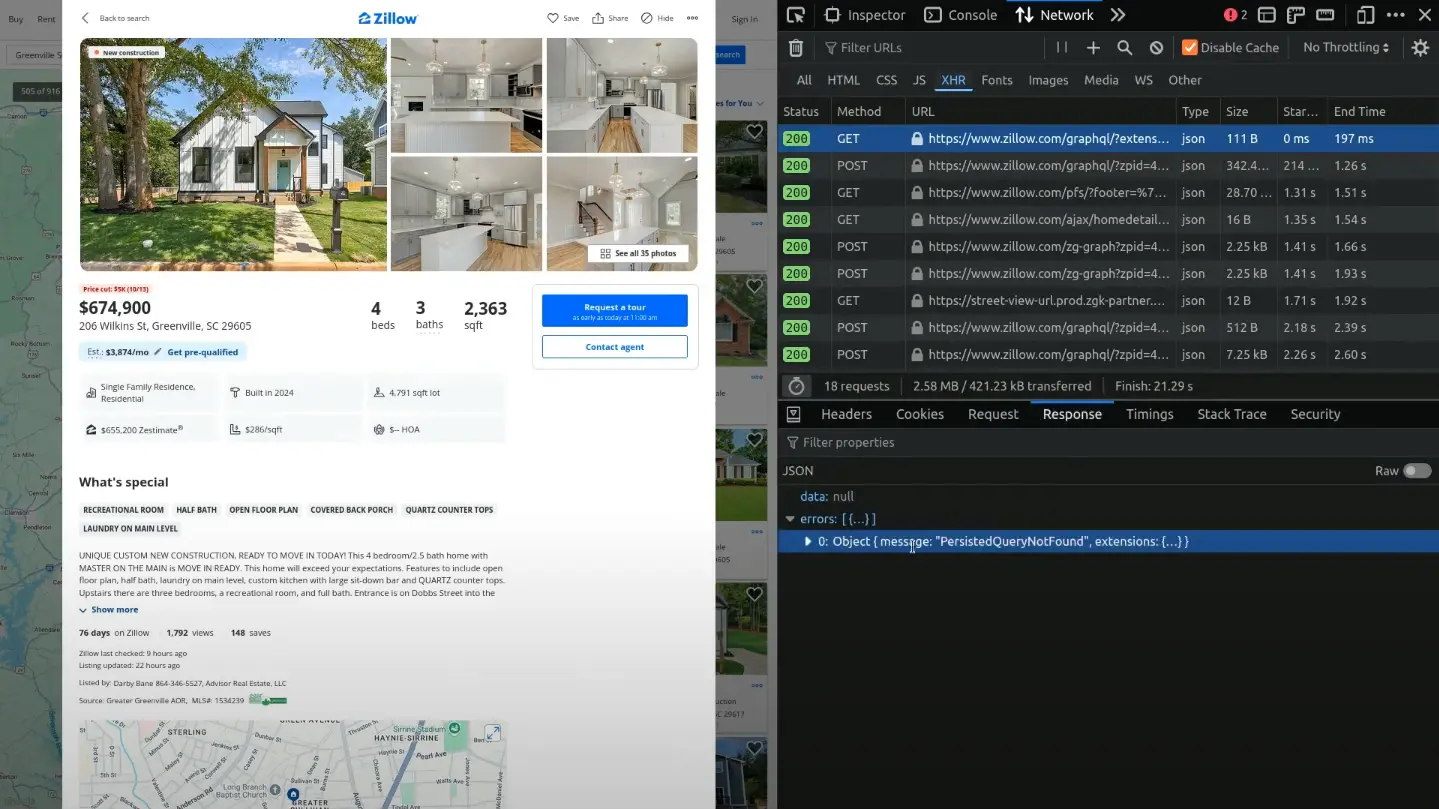Reverse engineering GraphQL persistedQuery extension
GraphQL is a query language for getting deeply nested structured data from a website's backend, similar to MongoDB queries.
The request is usually a POST to some general /graphql endpoint with a body like this:

When scraping data from websites using GraphQL, it’s common to inspect the network requests in developer tools to find the exact queries being used. However, on some websites, you might notice that the GraphQL query itself isn’t visible in the request. Instead, you only see a cryptic hash value. This can be confusing and makes it harder to understand how data is being requested from the server.
This is because some websites use a feature called "persisted queries. It's a performance optimization that reduces the amount of data sent with each request by replacing the full query text with a precomputed hash. While this improves website speed and efficiency, it introduces challenges for scraping because the query text isn’t readily available.

TLDR: the client computes the sha256 hash of the query text and only sends that hash. In addition, you can possibly fit all of this into the query string of a GET request, making it easily cachable. Below is an example request from Zillow

As you can see, it’s just some metadata about the persistedQuery extension, the hash of the query, and variables to be embedded in the query.
Here’s another request from expedia.com, sent as a POST, but with the same extension:

This primarily optimizes website performance, but it creates several challenges for web scraping:
- GET requests are usually more prone to being blocked.
- Hidden Query Parameters: We don’t know the full query, so if the website responds with a “Persisted query not found” error (asking us to send the query in full, not just the hash), we can’t send it.
- Once the website changes even a little bit and the clients start asking for a new query - even though the old one might still work, the server will very soon forget its ID/hash, and your request with this hash will never work again, since you can’t “remind” the server of the full query text.
For various reasons, you might need to extract the entire GraphQL query text, but this can be tricky. While you could inspect the website’s JavaScript to find the query text, it’s often dynamically constructed from multiple fragments, making it hard to piece together.
Instead, we’ll take a more direct approach: tricking the client application (e.g., the browser) into revealing the full query. When the client uses a hash that the server doesn't recognize, the server typically responds with an error message like PersistedQueryNotFound. This prompts the client to resend the full query in a subsequent request. By intercepting and modifying the original request to include an invalid hash, we can trigger this behavior and capture the complete query text. This method avoids digging through JavaScript and relies on the natural error-handling flow of the client-server interaction.
For exactly this use case, a perfect tool exists: mitmproxy, an open-source Python library that intercepts requests made by your own devices, websites, or apps and allows you to modify them with simple Python scripts.
Download mitmproxy, and prepare a Python script like this:
import json
def request(flow):
try:
dat = json.loads(flow.request.text)
dat[0]["extensions"]["persistedQuery"]["sha256Hash"] = "0d9e" # any bogus hex string here
flow.request.text = json.dumps(dat)
except:
pass
This defines a hook that mitmproxy will run on every request: it tries to load the request's JSON body, modifies the hash to an arbitrary value, and writes the updated JSON as a new body of the request.
We also need to make sure we reroute our browser requests to mitmproxy. For this purpose we are going to use a browser extension called FoxyProxy. It is available in both Firefox and Chrome.
Just add a route with these settings:

Now we can run mitmproxy with this script: mitmweb -s script.py
This will open a browser tab where you can watch all the intercepted requests in real-time.

If you go to the particular path and see the query in the request section, you will see some garbage value has replaced the hash.

Now, if you visit Zillow and open that particular path that we tried for the extension, and go to the response section, the client-side receives the PersistedQueryNotFound error.

The front end of Zillow reacts with sending the whole query as a POST request.

We extract the query and hash directly from this POST request. To ensure that the Zillow server does not forget about this hash, we periodically run this POST request with the exact same query and hash. This will ensure that the scraper continues to work even when the server's cache is cleaned or reset or the website changes.
Conclusion
Persisted queries are a powerful optimization tool for GraphQL APIs, enhancing website performance by minimizing payload sizes and enabling GET request caching. However, they also pose significant challenges for web scraping, primarily due to the reliance on server-stored hashes and the potential for those hashes to become invalid.
Using mitmproxy to intercept and manipulate GraphQL requests gives an efficient approach to reveal the full query text without delving into complex client-side JavaScript. By forcing the server to respond with a PersistedQueryNotFound error, we can capture the full query payload and utilize it for scraping purposes. Periodically running the extracted query ensures the scraper remains functional, even when server-side cache resets occur or the website evolves.